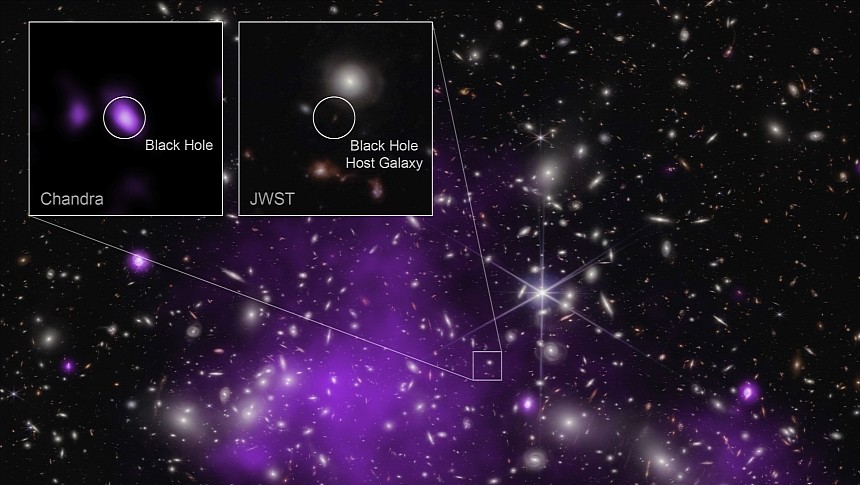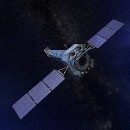The Chandra X-Ray Observatory and James Webb Space Telescope occupy polar opposite ends of the electromagnetic spectrum. When blindspots in one telescope's field of vision lead to a lack of definition, it's often a smart idea to use a different telescope operating on a different wavelength to help fill in the blanks. Occasionally, the results of this tag team in low-Earth Orbit simply defy belief.
With Chandra and JWST's collective sensors pointed at the same point in the cosmos towards the Abel 2744 galaxy cluster, the twin probes unearthed the telltale signs of an active supermassive black hole. But on closer inspection, it appears the black hole in question is far more distant than the 3.5 billion light years away said galaxy cluster resides. Astonishingly, NASA estimates this newly-found black hole resides 13.2 billion lightyears away. This means the light emitted from this cosmological old-timer is almost as old as the universe itself by the time it reaches our own neck of the woods.
In a period of the early universe where one might expect new-born stars to proliferate uninterrupted by outside forces, seeing the stellar end-stage that is a black hole in the mix proves that the conditions needed for black holes to form were just as rife in the genesis phase of the universe as they are right now. Over the course of two weeks, JWST and Chandra honed in on the colossal levels of superheated ionizing radiation across the infrared and the X-ray spectrum.
While Chandra observed the more apparent X-ray blasts emitted in the foreground of the above composite image, JWST used its powerful infrared sensors to fill in the blanks with details the X-ray spectrum alone couldn't expose in detail.
When countless terabytes of raw imaging data are processed back on Earth, what results is an awe-inspiring compound image that essentially lets humanity peer into a time period we were never supposed to see. But even beyond pretty imagery, unearthing the truth that black holes have been around just about as long as everything else in the universe.
But most shockingly, the discovery of such a gargantuan black hole so soon after the universe's creation challenges the notion that they only form from the collapsing of particularly massive stars. Could such enormous monsters of nature come into creation from other sources of ultra-high mass concentrated into a small, fine point? That's the question scientists analyzing the data gathered by JWST and Chandra hope to uncover through further study.
In a banner year for NASA marked by the start of the Artemis program, such a ground-breaking discovery cap off 12 months that will come to define the agency and its allies for many years to come.
In a period of the early universe where one might expect new-born stars to proliferate uninterrupted by outside forces, seeing the stellar end-stage that is a black hole in the mix proves that the conditions needed for black holes to form were just as rife in the genesis phase of the universe as they are right now. Over the course of two weeks, JWST and Chandra honed in on the colossal levels of superheated ionizing radiation across the infrared and the X-ray spectrum.
While Chandra observed the more apparent X-ray blasts emitted in the foreground of the above composite image, JWST used its powerful infrared sensors to fill in the blanks with details the X-ray spectrum alone couldn't expose in detail.
When countless terabytes of raw imaging data are processed back on Earth, what results is an awe-inspiring compound image that essentially lets humanity peer into a time period we were never supposed to see. But even beyond pretty imagery, unearthing the truth that black holes have been around just about as long as everything else in the universe.
But most shockingly, the discovery of such a gargantuan black hole so soon after the universe's creation challenges the notion that they only form from the collapsing of particularly massive stars. Could such enormous monsters of nature come into creation from other sources of ultra-high mass concentrated into a small, fine point? That's the question scientists analyzing the data gathered by JWST and Chandra hope to uncover through further study.
In a banner year for NASA marked by the start of the Artemis program, such a ground-breaking discovery cap off 12 months that will come to define the agency and its allies for many years to come.





